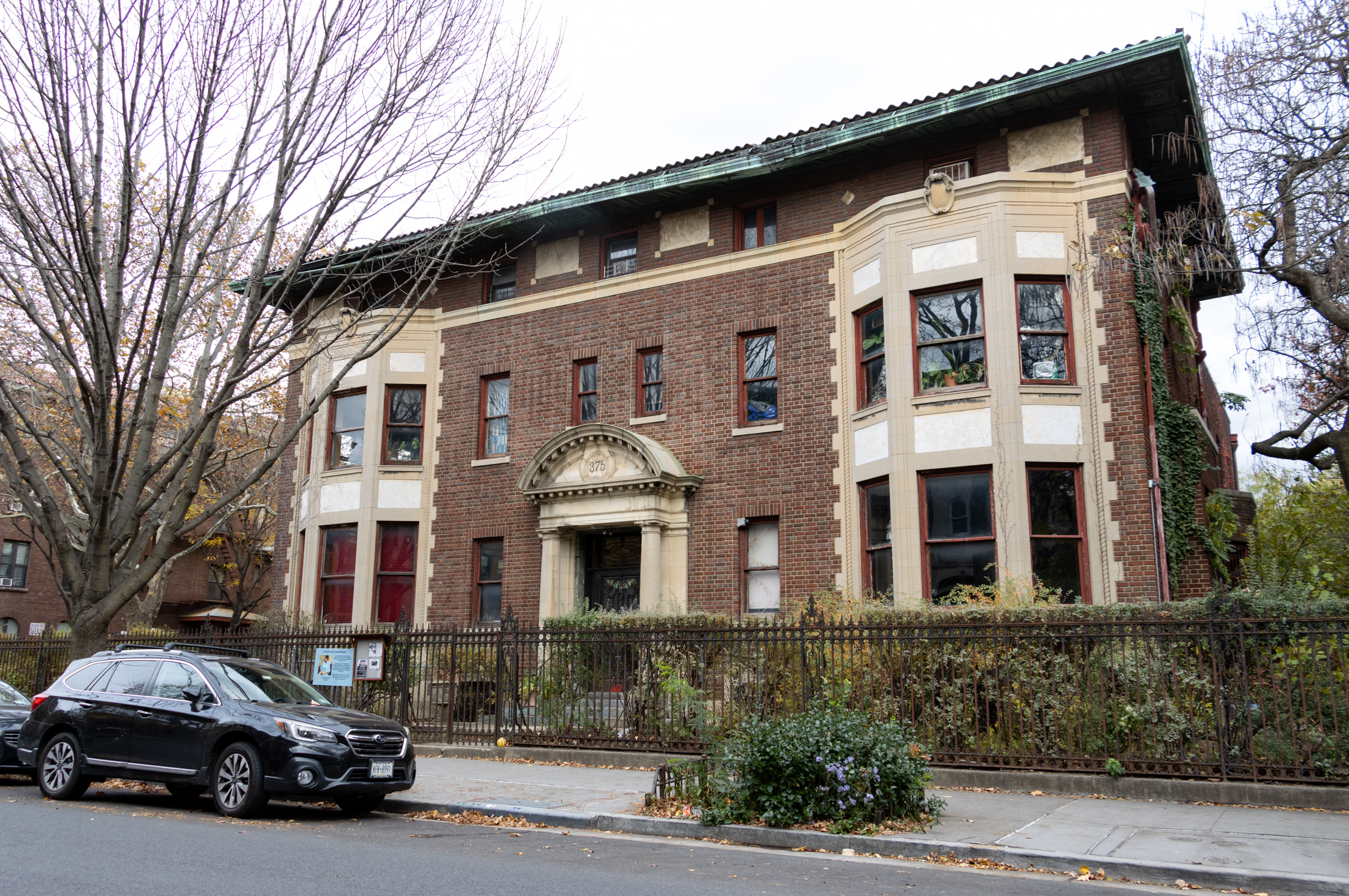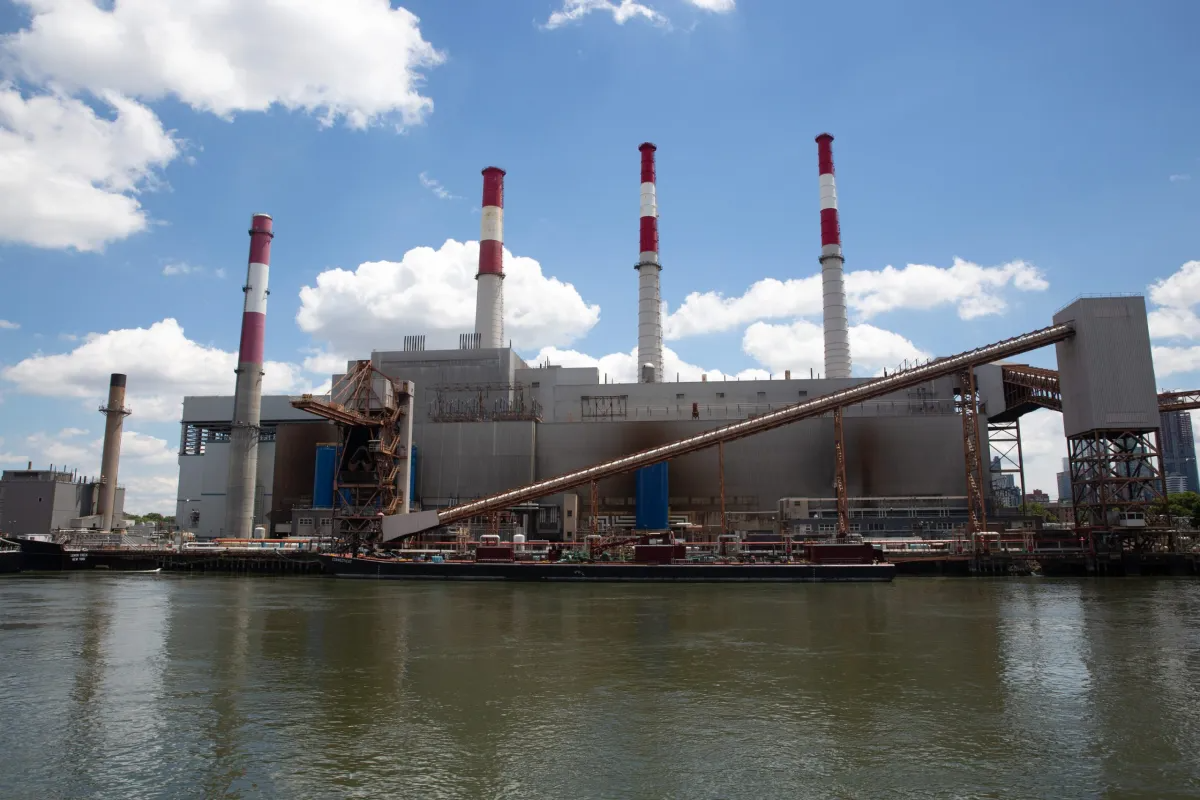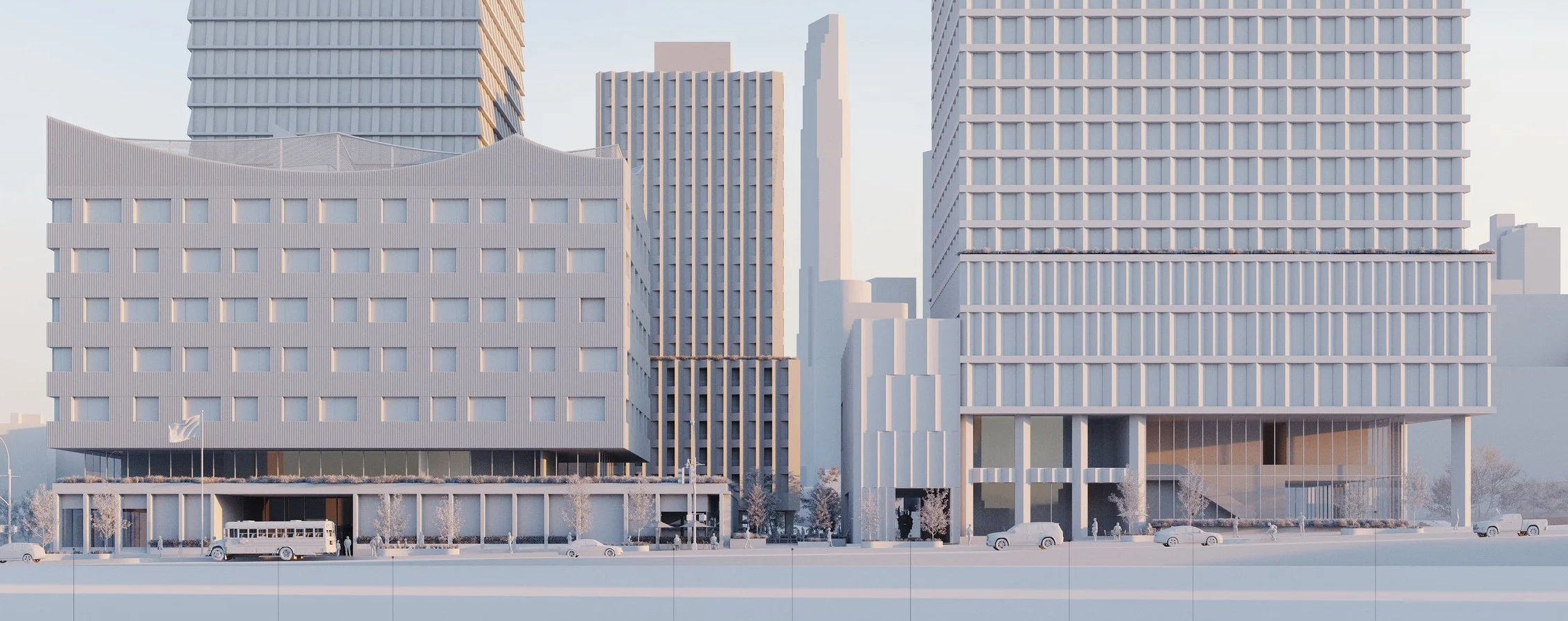DoBro Redevelopment Not So Great for Everyone
Not everybody is profiting off the Downtown Brooklyn boom, according to a recent report. Families United for Racial and Economic Equality (FUREE) and the Urban Justice Center conducted surveys of 61 small businesses in Downtown Brooklyn over the past year and found 35 have since moved or gone under. Many of the closures were attributed…


Not everybody is profiting off the Downtown Brooklyn boom, according to a recent report. Families United for Racial and Economic Equality (FUREE) and the Urban Justice Center conducted surveys of 61 small businesses in Downtown Brooklyn over the past year and found 35 have since moved or gone under. Many of the closures were attributed to four large projects &mdash City Point, Al Laboz’s planned Willoughby West tower, Stahl Real Estate’s 50-story office tower, and the planned Willoughby Square Park &mdash and the decrease in daytime business as office towers were emptied for residential development. Three-quarters of the owners surveyed are immigrants, 64 percent non-white, and 23 percent women.
The report, “Out of Business,” points out that Fulton Mall was already one of the city’s most successful retail corridors with 100,000 daily shoppers and $100 million in annual sales. In fact, a prominent local broker explained to us that Fulton Mall’s retail space is so lucrative that landlords actually removed stairwells and elevators in many of the buildings to create more ground-floor space, which now rents at between $150 and $300 per square foot (we were wondering why all the unsightly boarded-up windows). He said residential and low-end office tenants who would have rented out the upper levels were more troublesome and less lucrative, so landlords simply boarded up the windows and stopped maintaining those floors. FUREE co-director Ilana Berger suggested landlords re-open that less expensive space to small business owners, many who had already been paying prime ground-floor rates, as one way to maintain Fulton Mall’s diversity. But she acknowledged that after decades of neglect, renovation would be costly. Berger said she also tried to meet with the City Point developers to help secure space for displaced and aspiring small businesses owners in the tower’s 500,000 square feet of planned retail, but was met with disinterest. Click through for stories on some of the businesses profiled in the report, and the Downtown Brooklyn Partnership’s response…
Alas, the report alludes, the new residents and office tenants the city hopes to attract don’t generally shop at the same book and apparel stores; they don’t get their hair and nails done at the same places; and they want a different crop of restaurants. And the landlords (only five of the entrepreneurs surveyed owned their store or building) want to cash in on the lucrative 2004 Downtown Brooklyn re-zoning, but in order to build towers, the existing business owners had to be kicked out. But will they be invited back?
Joe Chan, president of the Downtown Brooklyn Partnership, a public-private agency, responded with a statement: “Downtown Brooklyn is one of the fastest growing urban centers in America. The redevelopment activity in the area brings with it jobs and a permanently enhanced local economy. The Downtown Brooklyn Partnership with its BID partners work to connect small business owners with available resources and appropriate service providers.”
According to the report, many small business owners weren’t offered this assistance. Berger said the city could create a Business Relocation Assistance Corporation for Downtown Brooklyn like they have in Williamsburg-Greenpoint and other parts of the city. Displaced small businesses are provided grants that help with relocation costs such as moving heavy equipment; hiring lawyers, architects and contractors; and other costs associated with signing a new lease. Otherwise, relocation assistance is on the onus of landlords, isn’t always honored, and often involves lawyers. Here are a few businesses profiled:
- Gallery Religious Supplies owner Maisha Morales bought the business around 2001 when it was still at Albee Square Mall, and increased its daily earnings from $100 to $2,500 by 2006, according to the report. In in effort to sign a 20-year lease under previous owner Thor Equities, she spent $15,000 on lawyers, architects and contractors, then was served a nine-day eviction notice when rights to develop the building were awarded to the new owners, MacFarlane Partners and Acadia Realty Trust. She had to spend $85,000 to move and now pays three times her former rent for space on Willoughby Street.
- A & B Books owner Eric Gift, at one time the largest distributor of African American literature in the country with three stores in the Downtown Brooklyn area, may have to close his last location on Duffield Street, in the footprint of the planned Willoughby Square Park, if the city moves forward with seizing the property via eminent domain. The Lawrence Street and Atlantic Avenue locations closed down due to lack of business because of ongoing construction and changing demographics, according to the report. They first opened in 1989.
- Lawrence Street Wigs and Hats owners Joyce and Jee Kiehm ran a thriving business since 1986 by making customized wigs. They were forced out of 141 Lawrence Street because the new owner of their building, Stahl Real Estate, wants to build a 50-story tower, according to the report.
- Bagel Guys, at 102 Willoughby across from MetroTech, ran a thriving business until the Verizon building was sold and many Chase workers were relocated to New Jersey, but stuck around hoping the new BellTel residents would boost business again, according to the report. Despite being on a month-to-month lease since 2005, owner Jeff Garguilo bought out his partners with the understanding that his business would be safe for at least the next five years, then was served with a 60-day eviction notice once his landlord decided to redevelop the property. He is unemployed and unable to find affordable space within the vicinity, but is still looking.
The questions of the day are: What responsibility does the city have to ensure that these small business owners don’t fall into financial ruin in the process? And is there going to be a higher demand for the new businesses coming in than the ones already there, considering what’s available in surrounding retail corridors?
DoBro’s Average Household Income to Double? [Brownstoner]
Massive Bridge Street Tower In The Works? [Brownstoner]
Albee Square Mall Clears Out [Brooklyn Eagle]
Much of Downtown Brooklyn Is Going Out of Business [Brooklyn Eagle]
The study area:






Its not that I dont like FUREE – its that their report can not be taken as a serious STUDY/ANALYSIS of what is going on in Downtown Brooklyn….thats all I am saying
As for subsidizing wigs and incense – hangonsloopy advocated subsidies/assistance to keep such biz open (see 10:58)
Look be realistic – if the goal was and is to make Downtown Brooklyn a thriving 24/7 central business and residential district (which was the stated goal) of course businesses that cater to more niche markets (like wigs, incense etc) may have trouble increasing volumes to pay higher rents (not to mention that some businesses are going to be eliminated to make way for the new buildings) and other businesses like a Bagel store may survive if they can transition to the new clientele (sure no more Verizon workers at BellTell – but Verizon workers don’t buy bagels on Sat or Sun and rarely buy Lox and $4 coffees either).
The point is, if the city wants to reach its goal (24/7 central district served well by mass transit) – it cant start subsidizing what is there now – then you’ll end up with nothing – a crappy district – with unsuccessful stores and tons of vacancies.
Change is hard for many but in the end making downtown Brooklyn a world-class central business and residential district will be good for the vast majority of Brooklynites and NYers and everyone suffers in the long run if future workers and residents end up living in NJ instead.
I love you, giselle 123!
denton- it isn’t even that I think it should be left alone. I just object to the forcible demise of a viable area, instead of letting things change normally as businesses go out and new ones come in, and just letting successful businesses keep on being successful.
But the overall assumption seems to be that if you aren’t catering to the rich, you can’t possibly be successful. If NYC’s tax base depended just on those who buy Vera Wang wedding gowns and Ralph Lauren furniture, it would shut down in a week.
FSRG: Rather than addressing in-depth the issues in this report, which have a dramatic impact on peoples’ lives, you are taking the low road by debasing this organization and this blog for writing about the report. Clever, and craven.
News flash: Most reports are conducted by people with an agenda. That doesn’t necessarily make their findings untrue. In fact, they often look where other “non-biased” people are not looking because they have a better understanding of their constituency. That doesn’t mean the report should be the sole source of policy-making, it means it should be taken into consideration. What about the Downtown Brooklyn Partnership’s inflated statistics, speculation presented as fact, and puffery regularly funneled to the media? What’s wrong with FUREE conducting surveys of small business owners and writing a report about their findings? Because the people at FUREE don’t wear business suits? Because they would rather shop at these stores than H&M and CB1? Because they can’t afford the hundreds of million-dollar piece of crap condos developers so desperately have to get rid of? Because they could be right that the city’s little urban planning experiment might fail?
Guess what, if you look at successful urban planning across the city, usually some sort of compromise was involved. Because the measure of success in urban planning is the number of people who use what was put there, and obviously the more people something appeals to, the more people who will partake. Fulton Mall is already heavily used. FUREE is just asking that the urban planners try to keep some of these popular stores in the mall while shoehorning in their new ones. If the city tried to work in some of FUREE’s ideas, and real market demand, not hoped-for market demand, maybe Downtown Brooklyn would be more successful. Instead, the city is ignoring the current market there, and playing with Downtown Brooklyn as if it were a petri dish. Will people move in? Some, but judging from sales and the inability to secure office tenants in even the existing buildings, not as many as the city had hoped, and not as many to support the high-rise infrastructure with real dollars, not subsidies.
And it’s not like these business owners were even looking for handouts. They were paying their $150 per square foot rent, paying their taxes, providing products and services to people. Who are you to say a wig store or a religious supply store, that also sells incense as it is a religious supply, aren’t as worthy of tax dollars as wealthy developers, corporations, and other chains that take our dollars off to some other city or country? Maybe your white mother doesn’t wear a wig, unless she has some illness or treatment that causes the loss of hair, but A LOT of women of color do. And guess what, a lot of women of color live in Brooklyn! Near Downtown! You only think things are worthwhile that appeal to your own culture, and therefore you really shouldn’t be opining on urban planning in a place like New York City, which caters to people of all different hair types, religions, styles of dress, choices of food, etc. If NYC only appealed to one culture, there wouldn’t be enough people here to support the infrastructure built for 8.2 million people, and we would become like the decayed, vacant urban centers across America.
Junkman- many of those small businesses have contributed tax dollars for years. Yet Fulton St. has been treated for years as though it is a veritable wasteland.
this is not about a blight, war torn strip of real estate (although there are many who would try to claim it is). This is about tearing down a successful business district that caters to one demographic to cater to another, richer one. And I object to that on a lot of levels, not the least of which is the inherent elitism and entitlement that goes along with it.
I realize most of the newcomers don’t really give a damn about the businesses and clientele of Fulton st. and they certainly don’t care about how much more of a hardship it is for them. Or the economic losses. I realize talking about fairness on brownstoner is an exercise in futility but i will still say, this kind of development will make its own set of problems in the long run and ones which we will all pay for, one way or another, in terms of community, economics or the soul of Brooklyn.
Re A&S, as well as Western Beef’s demise, I share your disgust. But neither is a simple greedy landlord case. Western’s owner owned the building and chose to cash out. A&S was a family owned building as well, and the sister who ended up with the building decided to cash in, it seems.
bxgrl, I agree about leaving things alone (at least that’s what I think you are saying). Just cuz many of the businesses don’t appeal to the tastes of some of the refined newcomers doesn’t mean that they aren’t successful businesses that pay taxes, generate profits, have employees, and serve their own demographic.
fsrq- a successful business puts money into taxes. Fulton st. is already a successful business district and it has been for a long time. sure there have been a lot of businesses come and gone, but I can still walk down Fulton and tell you which have been the long time survivors and there are more than you think. And i have seen many of then adjust and change to the market. But Fulton St. was not dependent on new construction, the Marriott or the gentrifyiers. The real issue seems to be that it wasn’t as upscale as new residents feel entitled to. I loved in that area over 20 years and I’ve seen a lot of changes but just because you don’t like FUREE, whose agenda is education and political empowerment so that minorities can compete for good jobs. What’s wrong with that? Doesn’t mean you should shortchange their report. frankly, what agency, developer or business doesn’t have an agenda to promote?
Who is asking anyone to subsidize wig and incense shops? where the hell did that come from? We’re talking about businesses that are successful.On the other hand, those shops reflect their market, so who are you to decide what’s a worthwhile business? The money spent in those shops is still green.
Downtown Brooklyn redevelopment is a unique circumstance primarily due to the 2004 Downtown Brooklyn rezoning with respect to air rights. These air rights plus the Flatbush Corridor’s ideal location with respect to Manhattan and many of Brooklyn’s most affluent communities such as DUMBO. the Heights, Cobble Hill, Boerum Hill, Fort Green, and Park Slope makes this location an ideal candidate for attracting a business community that has previously been moving across the Hudson to Exchange Place and other communities outside Manhattan. MetroTech has been a huge success.
These tax dollars are crucial to all of NYC citizens from rich to poor. Those subsidies that were mentioned by others to support the small business owners have to be paid for with tax dollars. Downtown Brooklyn Redevelopment will bring huge tax dollars from new retail needed to cater to major inflow of residents. Hotels like the newly built Sheraton, Loft, Indigo etc. bring jobs and tax dollars to the local community as well.
All one has to do is go to google maps and see what this area, basically I’m referring to the Albee Square area, looked like a mere 2 years ago. (Google maps haven’t been updated.) It was a wasteland. When City Point is completed, this area will be a 24/7 thriving community with life.
Some retailers will benefit some won’t but those that are successful now will continue to be successful as long as their is a market for their goods.